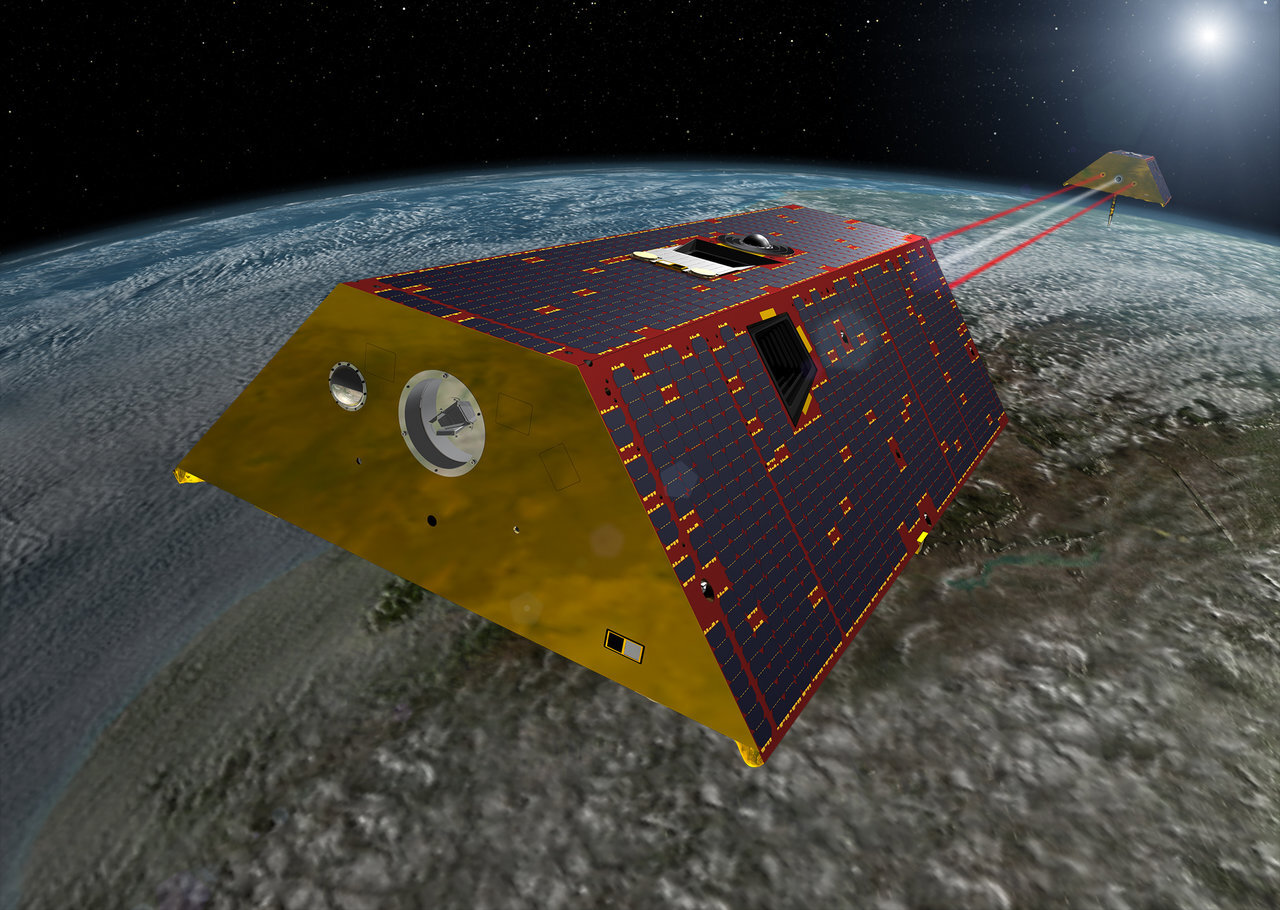Missions
Gravity Recovery and Climate Experiment Follow-On (GRACE-FO)

The Gravity Recovery and Climate Experiment Follow-On (GRACE-FO) mission is a partnership between NASA and the German Research Centre for Geosciences (GFZ). GRACE-FO is a successor to the original GRACE mission, which orbited Earth from 2002-2017. GRACE-FO is carrying on the extremely successful work of its predecessor while testing a new technology designed to dramatically improve the already remarkable precision of its measurement system.
GRACE-FO, which launched May 22, 2018, continues the work of tracking Earth's water movement to monitor changes in underground water storage, the amount of water in large lakes and rivers, soil moisture, ice sheets and glaciers, and sea level caused by the addition of water to the ocean. These discoveries provide a unique view of Earth's climate and have far-reaching benefits to society and the world's population.
How it works
GRACE-FO's raw data is a series of measurements showing how far apart two satellites are from each other. The twin satellites follow each other in orbit around the Earth, separated by about 137 miles (220 km). They will constantly send microwave signals to each other to measure the distance between them.
As the pair circles the Earth, areas of slightly stronger gravity (greater mass concentration) affect the lead satellite first, pulling it away from the trailiing satellite. As the satellites continue, the trailing satellite is pulled toward the lead satellite as it passes over the gravity anomaly. The change in distance would certainly be imperceptible to our eyes, but the extremely precise microwave ranging system on GRACE-FO is designed to detect minuscule changes in the distance between the satellites.
A hightly accurate measuring device known as an accelerometer, located at each satellite’s center of mass, measures the non-gravitational accelerations (such as those due to atmospheric drag) so that only accelerations cased by gravity are considered. Satellite Global Positioning System (GPS) receivers determine the exact position of the satellite over the Earth to within a centimeter or less. All this information from the satellites is used to construct monthly maps of the Earth’s average gravity field, offering details of how mass, in most cases water, is moving around the planet.
Learn more at https://gracefo.jpl.nasa.gov.
